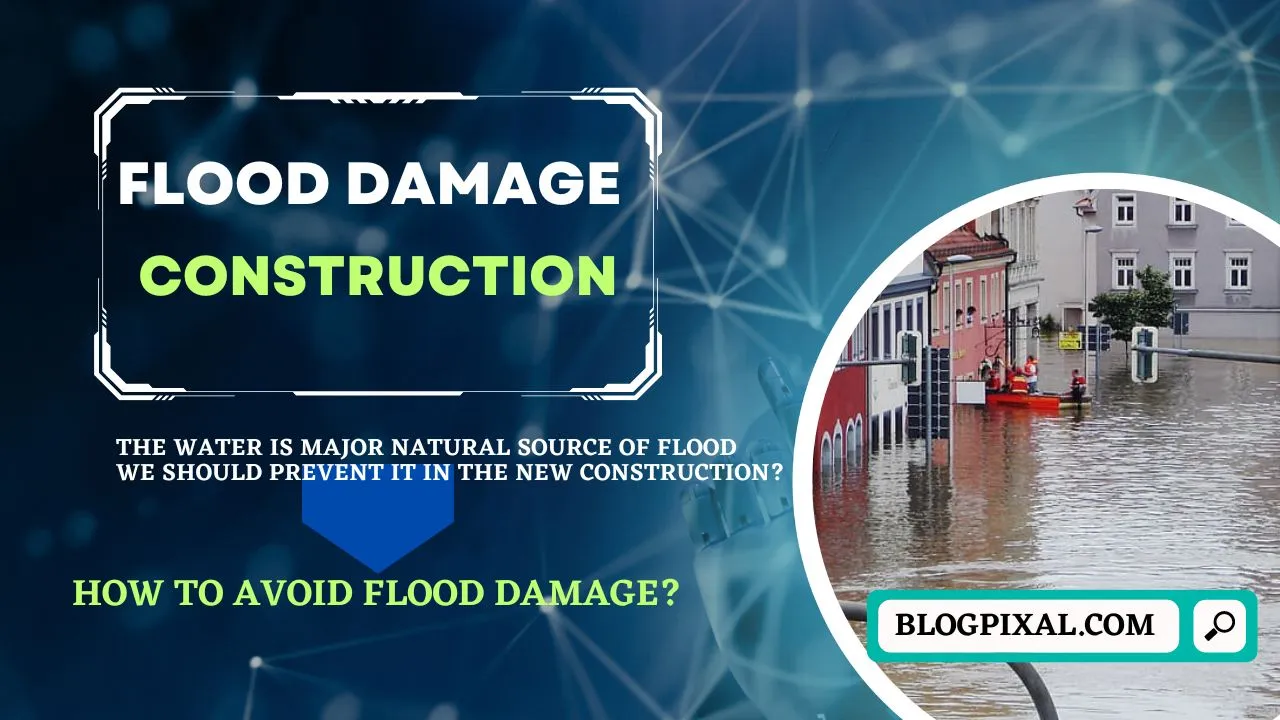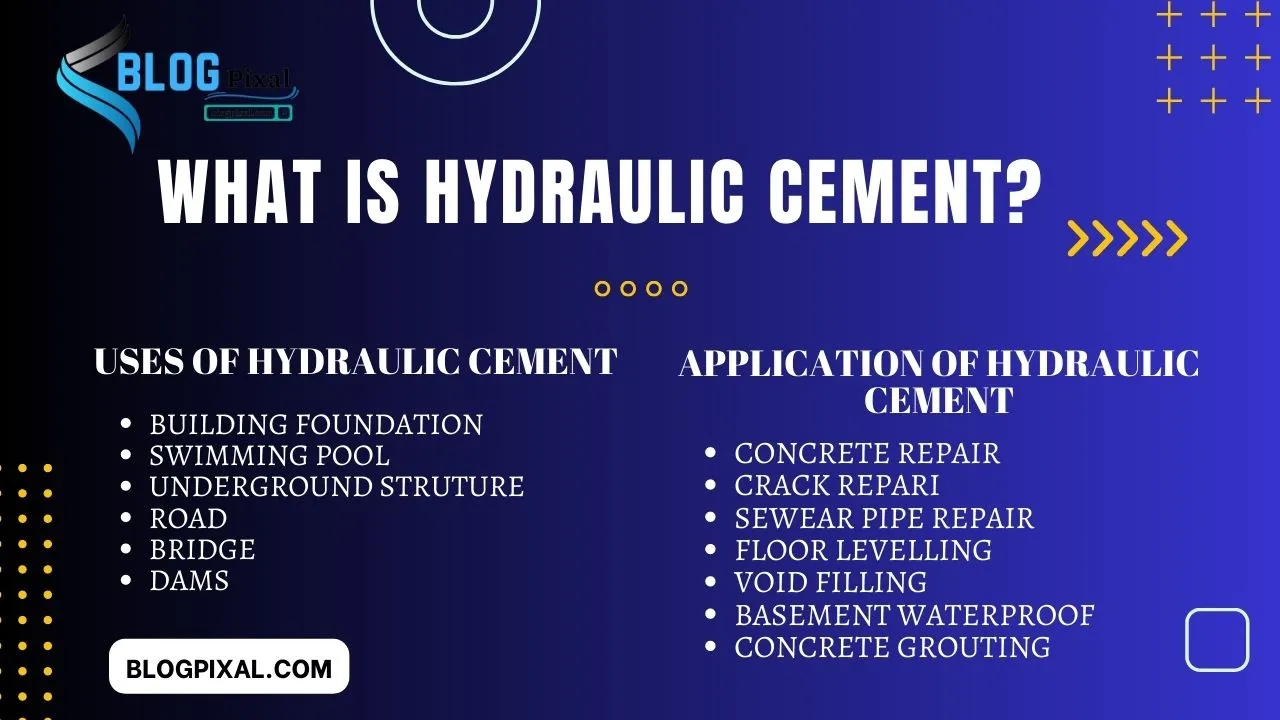Hi welcome to the next blog post. Today in this post we will discuss about the Construction Project, where we need to safe from the natural floor damage. How we avoid flood damage in new construction project? If you have any plus point please comment down below.
In the different type of construction fault will directly effect on your dream project, We need to secure construction project before to save your construction cost.
They have many tips and tricks which should you follow to avoid flood damage in construction. I mentioned all the details about the topic, But you can suggest for more in the comment section that I will add on this post.
without wasting time let’s get started:
Introduction
Floods cause extensive damage to homes, causing huge economic losses and problems in multiple buildings. However, there are ways to protect your building project from water damage.
We explores the causes of flooding and suggests practical remedies to avoid flood damage in new construction project. These steps will strengthen your new construction venture, providing flexibility to withstand adverse weather conditions.
They include installing higher foundations, using flood-resistant materials, and making drainage adjustments. All parties concerned can gain peace of mind by preparing for the worst.
Importance
Followings are the some important point should we measure to avoid flood damage in new construction project:
- Protects property owners from costly repairs and financial losses
- Preserves the structural integrity of the construction project
- Prevents disruption of construction timelines and delays
- To secure worker safety on the construction site
- Minimizes the risk of damage to equipment and machinery
- Reduces the potential for mold growth and related health hazards
- Safeguards the integrity of electrical systems and prevents electrical hazards
- Maintains the functionality of plumbing and sewage systems
- Protects valuable assets, materials, and equipment stored on-site
- Enhances the longevity and durability of the construction project
- Increases the resale value and marketability of the property
- Enhances the reputation of the construction company or developer
- Mitigates the environmental impact of flood-related damage
- Preserves the aesthetics and appearance of the property
- Promotes sustainable and resilient construction practices
- Provides peace of mind for property owners and stakeholders
- Reduces insurance premiums and potential liabilities
- Ensures compliance with building codes and regulations
- Improves community resilience against natural disasters
- Contributes to a safer and more resilient built environment.
What are the causes of flooding?
Followings are the some major causes of Flooding That directly effected to the construction project:
Natural Disasters
Natural disasters, such as hurricanes, heavy rains, and rising groundwater, can unleash devastating floods.
Hurricanes carry Large amounts of water inland, overwhelming rivers and streams, leading to overflow onto lower-lying land.
Heavy rains can saturate the ground, overpower storm drains, and inundate local rivers and streams. Moreover, if the groundwater level exceeds the land’s capacity to absorb it, flooding can occur.
Understanding these natural causes is crucial for effective flood prevention in new construction projects.
Man-Made Activities
While natural disasters pose significant flood risks, man-made activities can also contribute to flooding.
Dams, designed to control and contain water, can unintentionally cause flooding if not properly maintained or if subjected to excessive water pressure.
In such cases, dams may breach their banks, resulting in downstream flooding.
It is essential to recognize the potential risks associated with man-made structures like dams and implement preventive measures during the construction of new projects.
Inadequate Drainage
Proper drainage is essential to mitigate flood risks. Inadequate drainage systems can exacerbate flooding in construction projects.
Blocked or clogged gutters and downspouts can lead to the accumulation of standing water, which increases the likelihood of flooding in nearby areas.
Similarly, poor construction practices, such as improper grading that directs water onto neighboring properties instead of effectively draining it away, can contribute to localized flooding.
By addressing these drainage issues during the planning and construction phases, the risk of flood damage can be significantly reduced.
Practical Solution of Avoid Flood Damage in New construction project
Site Selection
It is the first prevention of minimizing the costly damage of new construction projects.
Choosing the right location for your New construction project is the first step in avoiding costly flood damage.
Consider the historical flood data of the area and consult with local authorities to determine the flood risk level.
Ideally, select a site that is not affected by flooding or has proper flood control measures in place.
Elevation and Grading
Proper elevation and grading of the construction site can significantly reduce the risk of flood damage.
Ensure that the site is elevated above the base flood elevation (BFE) and design the grading to direct water away from the building.
Proper measures of sloping and grading techniques can help divert water to designated drainage areas.
Foundation Design
A solid foundation is essential for flood-resistant construction.
Constructing raised foundations is an essential strategy to minimize the impact of flood damage on your new construction project.
There are two primary methods for raising foundations: building a raised frame or increasing the height of the walls.
Both approaches offer effective flood protection by keeping the building above the reach of floodwaters.
Incorporate flood-resistant materials and construction techniques into the foundation design.
Consider using elevated foundation systems or raised platforms to keep the structure above potential flood levels.
Waterproofing
Installing waterproof membranes is one of the best ways to protect your new construction project from the devastating effects of floods.
Utilize waterproof membranes, coatings, and sealants on exterior walls, windows, and doors.
The membranes work as a barrier to preventing water from seeping into the structure.
By implementing waterproof membranes, you can significantly reduce the risk of costly flood damage and ensure the longevity of your building.
Ensure that all vulnerable points are adequately protected to maintain the integrity of the building envelope.
Drainage Systems
Implementing robust drainage systems is vital to handle excess water and prevent flooding.
Install proper stormwater drainage systems, including gutters, downspouts, and drains.
Direct the collected water away from the building and towards appropriate drainage channels or retention ponds.
I mentioned all the details about the drainage system above please review it carefully.
Flood Barriers and Protection
In construction areas with high flood risk, consider installing flood barriers or flood-proofing measures.
These can include flood walls, barriers, or deployable flood protection systems.
Consult with flood protection experts to determine the most suitable options for your construction project.
Regular Inspections and Maintenance
Regular inspections and maintenance are very essential to identify potential issues and ensure the effectiveness of flood mitigation measures.
Regular supervision is necessary during the construction project.
Inspect the site, drainage systems, and waterproofing regularly.
Properly address any damage or deterioration to maintain the flood-resistant integrity of the construction.
Flood Insurance Coverage
If you take precautions, it is recommended to have enough insurance coverage for your building project.
Consult with insurance professionals to understand the extent of coverage required for flood damage.
Review the terms and policy carefully to ensure it aligns with your project’s needs.
Emergency Preparedness
Create an emergency preparation strategy that includes precise flood-response methods.
Give professional training to your construction team on emergency procedures, evacuation routes, and safety measures.
A prepared and skilled team can help minimize the effects of a flood and maintain lives and property.
Installation of Flooding Detection and warning system
This is also important preventive measure of flood damage in the construction. This is preliminary alter of construction to secure flood damage. This system include sensors system, alarm’s and automatic alerts sound when water level is increased in the construction project.
Read More: Ultimate guide of Concrete Spalling
Building Materials for Flood Damage in New construction
Concrete
Concrete is a High strength and durable material. This water-resistant material can withstand flooding and is commonly used in foundations, walls, and floors of flood-prone areas.
Brick
Brick is another sturdy material that can resist flood damage. It provides excellent water resistance and structural integrity, making it suitable for flood-prone regions.
Stone
Natural stone( granite or limestone) is a robust material that can withstand floodwaters. It is commonly used for foundations and exterior cladding in a flood-resistant construction project.
Metal
Certain metals{stainless steel and aluminium} can be used in flood-prone areas as they are resistant to water damage and corrosion. Metal roofs and siding can help protect a building during floods.
Fiber cement
Fiber cement is a composition of cement, sand, and cellulose fibers. It is highly resistant to water damage and commonly used for siding and exterior cladding in flood-resistant construction.
Engineered wood
Engineered wood products, such as plywood and oriented strand board (OSB), can be treated with water-resistant coatings or additives to enhance their resistance to flooding. They are often used for flooring and wall sheathing.
Closed-cell foam insulation
Closed-cell foam insulation can resist water absorption and can be used in flood-prone areas to minimize damage and improve the energy efficiency of buildings.
Waterproof membranes
Waterproof membranes are applied to walls and foundations to create a barrier against water penetration. They are commonly used in basements and other below-grade areas.
Plastic composite materials
Certain plastic a composition of high-density polyethylene (HDPE) or fiberglass-reinforced panels (FRP)} are resistant to water damage and can be used for interior finishes and wall coverings in flood-resistant buildings.
Elevated flooring systems
Instead of using traditional materials, elevated flooring systems like steel or composite materials can be installed to raise the floor above the floodplain, reducing the risk of water damage.
You should remember that these materials are not completely used for high flood area. It is important to consider other flood mitigation measures, such as proper drainage systems, flood barriers, and flood-resistant design principles, to enhance the overall resilience of a building in flood-prone areas.
FAQs for Flood Damage in New Construction
How can I determine the flood risks associated with a construction site?
To determine flood risks, conduct a comprehensive site assessment that includes evaluating topography, nearby water sources, and historical flood data. Consult with local authorities and floodplain management agencies for additional insights.
What are some common flood-resistant materials for construction?
Common flood-resistant materials include concrete, brick, and metal. These materials are less susceptible to water absorption and deterioration.
What are flood-proofing measures?
Flood-proofing measures refer to strategies and techniques that prevent water entry into buildings. They can include installing flood barriers, flood gates, or inflatable seals.
How important is it to develop an emergency response plan for flood situations?
Developing an emergency response plan is crucial to ensure the safety of occupants and minimize damage during a flood. It helps establish evacuation routes, assembly points, and emergency procedures.
Why is collaboration with professionals important in flood prevention?
Your attempts to prevent flooding will benefit from the specific knowledge and experience that comes from working with experts like architects, engineers, and floodplain managers. They can offer helpful advice for creating and putting into action efficient flood protection measures.










